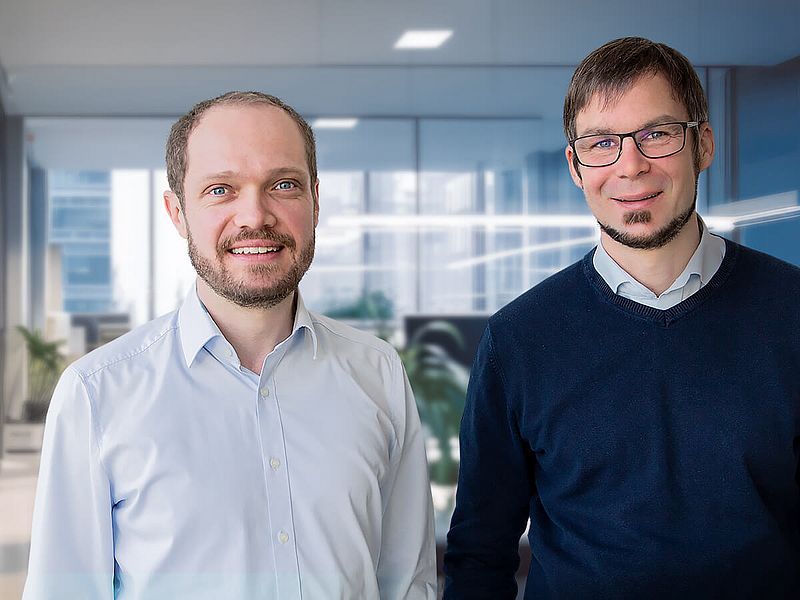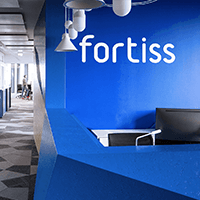The automotive industry is undergoing far-reaching changes, particularly in the area of software-defined vehicles. How can research provide support here?
Simon Barner: Research plays a key role in accelerating the development of safe, intelligent, reliable and high-performance vehicle software. In particular, investments in software architectures and advanced technologies such as machine learning and generative AI are essential here. On the one hand to optimize, e.g., navigation, object recognition and environmental perception, which are essential for assisted and autonomous driving and rapid responsiveness in complex situations. On the other hand, they bring innovative software-defined functions to the road faster and more cost-effectively and thus increase competitiveness. Today's innovations are of key importance right now, as they will lay the foundations for mobility in the coming years.
Andreas Bayha: The focus of investment should be on developing robust architectures that provide a stable foundation for innovative functions such as semi-autonomous driver assistance systems. In-depth expertise and a holistic and comprehensive approach to the entire software lifecycle – from requirements analysis and design to implementation, integration and validation – is required to meet the stringent safety standards in the automotive sector.
What key challenges do you see in the development of the semi-autonomous functions you have mentioned, and which solutions are currently gaining influence here?
Andreas Bayha: The development of semi-autonomous functions, such as AI-supported driver assistance systems, poses several major challenges. One of the biggest is ensuring the accuracy of AI algorithms in complex and unpredictable traffic scenarios, as these systems have to react extremely quickly and precisely to ensure road safety. Other key tasks include integrating different sensor technologies and maintaining flawless operation under changing real-world conditions, such as weather changes or heavy traffic.
This calls for targeted solutions from cutting-edge research in the fields of AI and machine learning. By developing advanced algorithms that can process data in real time, fortiss is helping to improve the decision-making accuracy and efficiency of AI components. Our research also focuses in particular on their trustworthiness, robustness and reliability.
Simon Barner: Another focus is on the safe, robust and seamless integration of components and subsystems in vehicle architectures. It is important that architectural decisions are analyzed as early as possible in the development process, as they have a major impact on the quality of the solution (e.g. response times) but also on development and manufacturing costs. Using automated model analyses, amongst others based on formal methods, we evaluate critical aspects such as hardware/software allocation, redundancy and scalability of the system at an early stage of the design process. This helps to optimize performance, reduce costs and to support safety certification. Simulation and fault-injection based solutions enable us to analyze the dynamic behavior of the system so that potential problems can be identified, analyzed and resolved in the early design stages.
At the component level, we are also working on improving object recognition and environment perception, which are essential for reliable trajectory planning, for example. By integrating sensor data into a coherent real-time environment model and using neural networks, we are significantly improving the system's ability to perceive and react to its environment.
Software development is currently one of the biggest cost drivers in the automotive industry. What role could variant management play in this context to reduce costs and increase efficiency?
Andreas Bayha: The complexity of software-defined vehicles is a factor that drives up software development costs in the automotive sector, with variability making a significant contribution, which can have various causes. Variability often results from market requirements, e.g. the adaptation of software for certain countries and target markets, or the offer of configurable options for the customer. On the other hand, variability is deliberately introduced to make software reusable – be it for different vehicle models, subsystems or adaptations to the vehicle platform, for example as part of a model upgrade or due to changes in the supply chain.
Variant management offers a systematic way of dealing with this complexity. It helps with the definition, documentation and control of variability in all phases of development – from requirements and system architecture to software implementation and testing. In practice, suitable tools and techniques for variant management should be used to ensure that the configurations are consistent and remain manageable.
Simon Barner: At fortiss, we have developed automated solutions for efficient variability analysis that enable early detection of variant-specific errors that might otherwise remain hidden. By eliminating these problems at an early stage, variant management reduces complexity, increases reliability and maximizes the efficiency, cost and time effectiveness of the development process through software reuse.
How does fortiss support companies in the automotive industry in the development and evaluation of advanced engineering methods and system components? What role does open-source software play in this?
Andreas Bayha: fortiss supports companies in the automotive industry by providing open-source tools that demonstrate innovative engineering approaches for applications that are safety-critical in the sense of standards such as ISO 26262. Tools such as OpenSBT for the search-based testing of automated driving systems and AutoFOCUS3 for the model-based development of embedded systems are available as open source. Thanks to licensing under the Apache 2.0 license, they are not only adaptable but can also be used in an industrial context as a basis for specific tooling prototypes or feasibility studies.
Simon Barner: With the Mobility Lab in the fortiss Labs, we also offer a special test environment in which companies can try out and validate system architectures or development environments under controlled conditions. The lab offers a manufacturer-independent infrastructure for tests and case studies based on open-source software. Using a real research and test vehicle as well as small-scale indoor vehicles, we also carry out tests on cooperative driving and implement scientific findings in direct cooperation with the automotive industry. Not least on this basis, we offer industry partners training, consulting and cooperative research and support automotive companies in effectively using open-source solutions for research, prototyping and testing.



